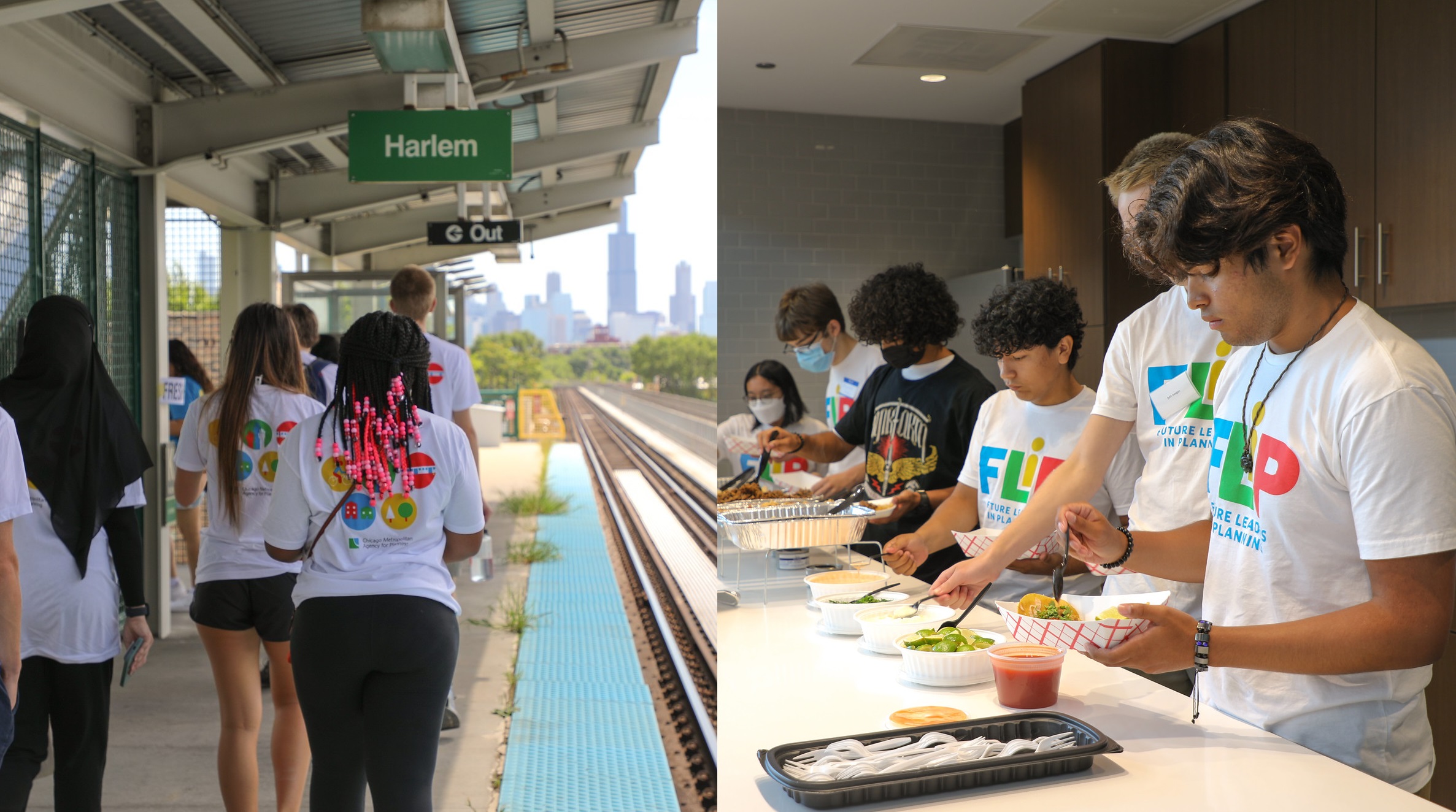 Students gathered at Ping Tom Memorial Park to reflect on their FLIP experiences.
Students gathered at Ping Tom Memorial Park to reflect on their FLIP experiences.
The program’s final session inspired FLIP students to improve quality of life through their future planning endeavors. Using a practice called theater of the oppressed, the cohort acted out various problems they perceived in their communities and described which planning strategies would best solve them.
“As a planner, I would work with the community to improve the foundational things that make communities better, such as schools, parks, roads, or grocery stores,” said Seth, a FLIP student from southwest DuPage County. “Improving access to these things is probably the most important factor that contributes to improving our community.”
Kelwin Harris, director of outreach and engagement at the Cook County Assessor's Office, presented on creating equitable communities and urged the budding planners to address the inequities in communities created by structural racism.
“Take these experiences at FLIP and use them to figure out: How am I going to use my gifts?” Harris said.
The FLIP program ended with a gathering beside the Chicago River at Ping Tom Memorial Park. Participants reflected on what they learned from their four-day foray into the world of planning.
Stay tuned for information about next year’s FLIP program in spring 2023.
 A panel of CMAP staff and interns share why they are passionate about the field.
A panel of CMAP staff and interns share why they are passionate about the field.  The FLIP cohort took public transit to visit The Hatchery and learn about entrepreneurship.
The FLIP cohort took public transit to visit The Hatchery and learn about entrepreneurship.  Aspiring planners visit the Chinatown library, designed with cultural aesthetics in mind and decorated with locally produced artwork.
Aspiring planners visit the Chinatown library, designed with cultural aesthetics in mind and decorated with locally produced artwork. Students gathered at Ping Tom Memorial Park to reflect on their FLIP experiences.
Students gathered at Ping Tom Memorial Park to reflect on their FLIP experiences.